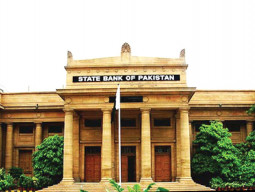
ISLAMABAD: The Privatisation Commission has decided to rely on the central bank’s expertise to vet almost half a dozen parties including two foreign institutions that have come forward to acquire the government-owned SME Bank.
The Commission has sent the documents of these parties that include a consortium comprising a real estate giant and Punjab-based Education Group to the State Bank of Pakistan (SBP) to judge them on the ‘fit and proper’ criteria, said sources in the finance ministry. The central bank will judge the credibility of the sponsors.
Financial services: SBP proposes Balochistan Bank
The SME Bank is a hot cake in the market, especially for those who want to venture in the banking sector for the first time, as the SBP is not issuing new licences for commercial banking.
Only those parties that will pass through the central bank’s test will be pre-qualified to buy the government’s 93.88% stake, according to officials. SME Bank is the only specialised financial institution that lends to small and medium-sized enterprises. Although the bank’s financial condition is far from impressive, its licence has become very pricey given the fact that the central bank is not issuing new licences for commercial banks.
In response to the Privatisation Commission’s advertisement, five parties have submitted the Statement of Qualification out of fourteen parties that had obtained documents at the initial stage. The Latin-American Finca Microfinance Bank, Sri Lanka-based Lanka Orix Leasing, Pakistani Development Financial Institutions and the real estate mogul are among the bidders.
The banks, development financial institutions, companies, firms and individuals were eligible to participate. However, these bidders must fulfil the fit and proper criteria prescribed by the SBP. The net worth of the individuals should be $50 million and in case of consortium, a minimum $5 million for each member.
Another important condition is that each bidder must demonstrate a sound track record of corporate performance and good governance. Those bidders who were previously disqualified or removed by the regulators cannot take part in the bidding process, according to the documents.
The sponsors will have to arrange cash to meet the regulatory cash requirement as well as pay the sale price to the government.
The SME Bank’s current licence is not of a specialised nature and it may venture into commercial banking. However, the SBP will withdraw this unrestrictive licence and issue a new specialised banking licence to the investors at a reduced MCR (minimum capital requirement), according to the transaction structure. The Privatisation Commission had appointed a consortium of Elixir Securities and Bridge Factor as financial advisers for the privatisation of the SME Bank. They had recommended that the MCR may be lowered to Rs4 billion, but the central bank did not accept it.
Instead, the central bank has fixed the MCR at Rs6 billion but staggered the payments over five years. In the first year, the new buyer will inject Rs2 billion and the remaining Rs4 billion is spread over a period of four years.
CAA employees challenge privatisation of airports
However, till the time the sponsors meet the MCR requirement, they cannot claim dividends.
The government holds 93.89% stake in SME Bank while 2.56% stake is with the National Bank of Pakistan. The United Bank Limited has 1.66% shares, followed by HBL 0.83%, MCB Bank 0.62% and ABL 0.32%.
Commercial banks are reluctant to lend to small and medium-sized industries, which is an obstacle to their growth besides restricting expansion of the sector.
The SME Bank has a paid-up capital of Rs2.39 billion since against the requirement of Rs10 billion. Its accumulated losses stood at Rs2.6 billion. In 2016, the bank incurred Rs457 million before-tax losses compared with Rs275 million losses a year before, according to the SME bank’s balance sheet.
The management has blamed pending privatisation, inadequate liquidity and economic conditions for the growing losses. The bank’s equity has almost eroded, standing at only Rs20,648. Its total liabilities are now almost equal to its net assets.
The financial advisers have warned that the MCR shortfall indicates a material uncertainty regarding the bank’s ability to continue as a going concern and the bank may be unable to realise assets and discharge its liabilities.
On recommendation of financial advisors, the Rs4.88 billion legacy portfolio of the SME Bank will not be part of the privatisation transaction. The bank had inherited this portfolio from the defunct Regional Development Finance Corporation and Small Business Finance Corporation. According to the transaction structure, the federal government will take responsibility of post-retirement and termination benefits of the employees but will not offer any severance scheme.
The potential buyer will also be indemnified by the government against any negative outcome as a consequence of existing tax exposure and employees’ litigation matters.
Published in The Express Tribune, April 16th, 2017.
Like Business on Facebook, follow @TribuneBiz on Twitter to stay informed and join in the conversation.






















































COMMENTS
Comments are moderated and generally will be posted if they are on-topic and not abusive.
For more information, please see our Comments FAQ